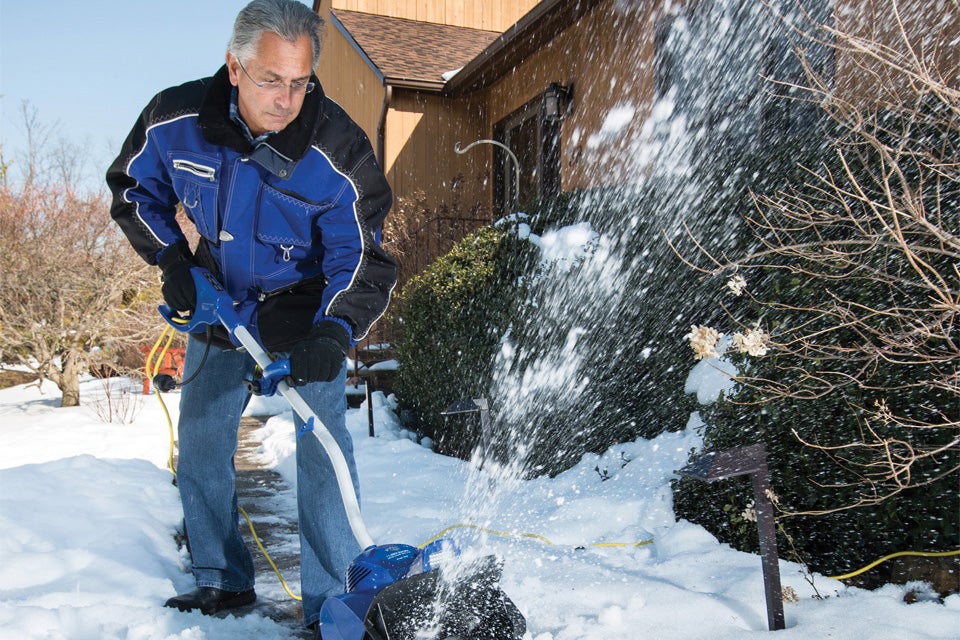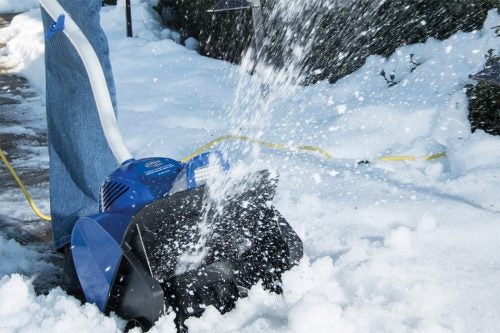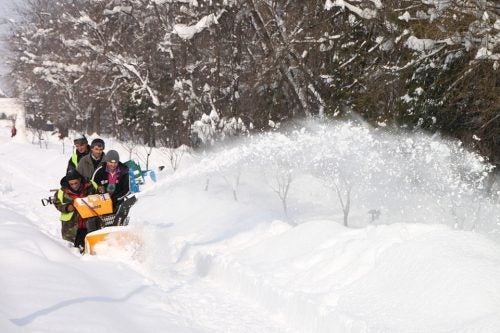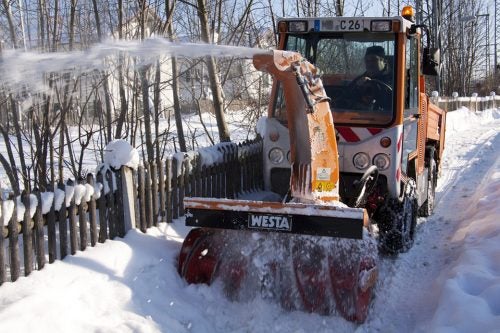Snowblowers are convenient, and save home and business owners a lot of time. But what exactly is the environmental impact of snowblowers?
According to the U.S. Environmental Protection Agency (EPA), the average snowblower creates about one pound of carbon monoxide emissions per hour. To put this figure into perspective, it takes a car driving approximately 70 miles to make the same amount of emissions. Overall small machines, including snowblowers, create 25% of mobile sources hydrocarbon emissions.
Greener Snowblowers
Ariens has a battery operated model ready for release – which reportedly works similarly to a gas powered motor and lasts up to 60 minutes on a single charge. However, since you need to plug into an electrical outlet, unless you are charging with a solar panel there are still emissions being created at the power plant that supplies your home.
A hybrid engine is being developed by Honda, which should reduce emissions by using the gas engine to charge and power the motor that drives the wheels. However, since battery operated and hybrid snowblowers are a new technology these models are much more expensive than their traditional gas counterparts.
Current Green Options

According to the EPA, four-stroke engines are a more environmentally-friendly choice, as they work more efficiently to get the job done, and they don’t burn oil the way two-stroke engines do. A four-stroke engine creates 1/10th of the pollutants, and will take less time to get the job done.
Newer snowblowers use an overhead-valve engine, as opposed to an L-head engine. Overhead-valve engines ensure less carbon sticks to the valves, for cleaner operation. All the changes made to recent models of snowblowers means that they run 75% cleaner than older models. So those who are getting into the snowblower market should avoid buying second-hand models as the trade-off is more emissions.
Fuel Spillage
It is advisable that snowblower owners take precautions to avoid spilling fuel or letting fuel sit in a container for long periods of time, as this will result in nitrogen oxide emissions. At the end of the season owners should drain excess fuel from their snowblower instead of letting the engine run until dry. Alternatively, a gas stabilizer can be added to keep gasoline fresh and prevent deposits.
Maintenance
A properly maintained snowblower will operate more efficiently and create fewer emissions. Refer to your owner’s manual for guidelines on maintaining your snowblower, and when to change your oil. Periodic tune-ups are also necessary, and will keep your snowblower in top operating condition.
While a snowblower isn’t as environmentally friendly as a good old shovel, it can prevent back injury and other health-related problems. Since snowblowers aren’t used as much as other garden equipment due to their seasonal nature, it’s not as imperative that they be as efficient as other machines that are used for longer periods of time during the year. However, it is still a good idea to do your best to find a snowblower that is efficient and planet-friendly.



